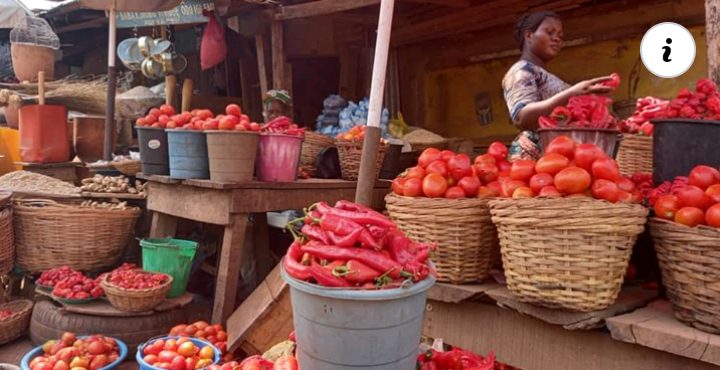OYOINSIGHT.COM managing editor, Adebayo AbdulRahman visited Owode, Oja’ba and Bodija and Sasa market, rocked by last week’s ethnic violence to feel the impact of the crisis. The DEFENDER presents you with excerpts from report of his findings:
While urging the government to find a lasting solution to the crisis at Sasa soon, she noted that the cost of all food items produced majorly in the northern part of the country have skyrocketed in the city over the last few days.
Oyeleke Warith manages his mum’s canteen. He was seated on a long wooden bench in front of the wooden shop that house the canteen when this reporter approached him.
“Pepper has never been this expensive at this time of the year in the last five years,” he said as he folded his arms.
The sudden rise in the cost of pepper in Ibadan, the Oyo State capital, is unconnected from the recent closure of the biggest pepper market in the state, Sasa market.
Sasa market was shut indefinitely on Saturday afternoon by Governor Seyi Makinde following the violent clash between Yoruba and Hausa traders. The clash, which lasted for nearly two days left an unknown number of people dead and properties worth millions destroyed.
While the market remains shut, the economic effect of this clash on residents of Ibadan has begun to set in as the prices of food items majorly supplied at Sasa market have begun to skyrocket.
Speaking further, Warith, who said the cost of pepper and other food items like onions has increased by about 50 percent in the last three days, noted that customers bear a significant part of the burden because they get smaller food at a slightly higher cost.
Even though he explained that “customers complain,” this change is inevitable in the face of the new challenges accustomed with getting food items in this category into the city.
A trip to Sasa
Before the violent clash, Sasa market was a foremost destination for various food items in Southwestern Nigeria, but when this reporter visited the market on Wednesday afternoon, it was almost unrecognizable.
The ashes of the shops and goods burnt down during the clash were like fresh wounds — they were still hot.
Rotten tomatoes and their woven baskets were the only reminder of what the market looks like.
Scores of traders were sighted struggling to pen their name with the market leadership for the proposed compensation package from the state government. But the look on their faces was still weary.
“I lost goods worth N20 million,” a tailor who can barely recognize her own shop told this reporter as tears dripped down her face.
Miles away from Sasa
Findings by OYOINSIGHT.COM based on interviews with pepper sellers in Ibadan, revealed that there are three major places where traders now go to get goods. These three places are Mile 12 Ogere, Oyo town. While the market at Oyo town is relatively easy to access through the Ibadan – Ilorin expressway, the market at Mile 12 and Ogere are located in Lagos State.
Mrs. Oseni sells pepper at Oja’ba market. Initially reluctant, she tilted her woven hat slightly upwards as she dived into a tale of the level of damage wrecked on Sasa market during the clash. “May God help us resolve the crisis they caused soon,” she prayed.
According to her, the worst part of going to Lagos, her new destination for goods, is the relatively higher price. “There is an increase of roughly 300 percent in the cost before adding the cost of transportation to and fro.”
“Government should find a solution soonest,” she added.
At Bodija, the sunny afternoon was not enough to prevent hundreds of people from throving into the market. A pepper seller, who simply identified herself as Iya Ibeji (mother of twins) was arranging her goods when this reporter approached her.
“I now go to Mile 12. Goods worth N10,000 at Sasa costs about N15,000 there,” she said in a barely audible voice.
While urging the government to find a lasting solution to the crisis at Sasa soon, she noted that the cost of all food items produced majorly in the northern part of the country have skyrocketed in the city over the last few days.
First published by Oyo Insight online.




